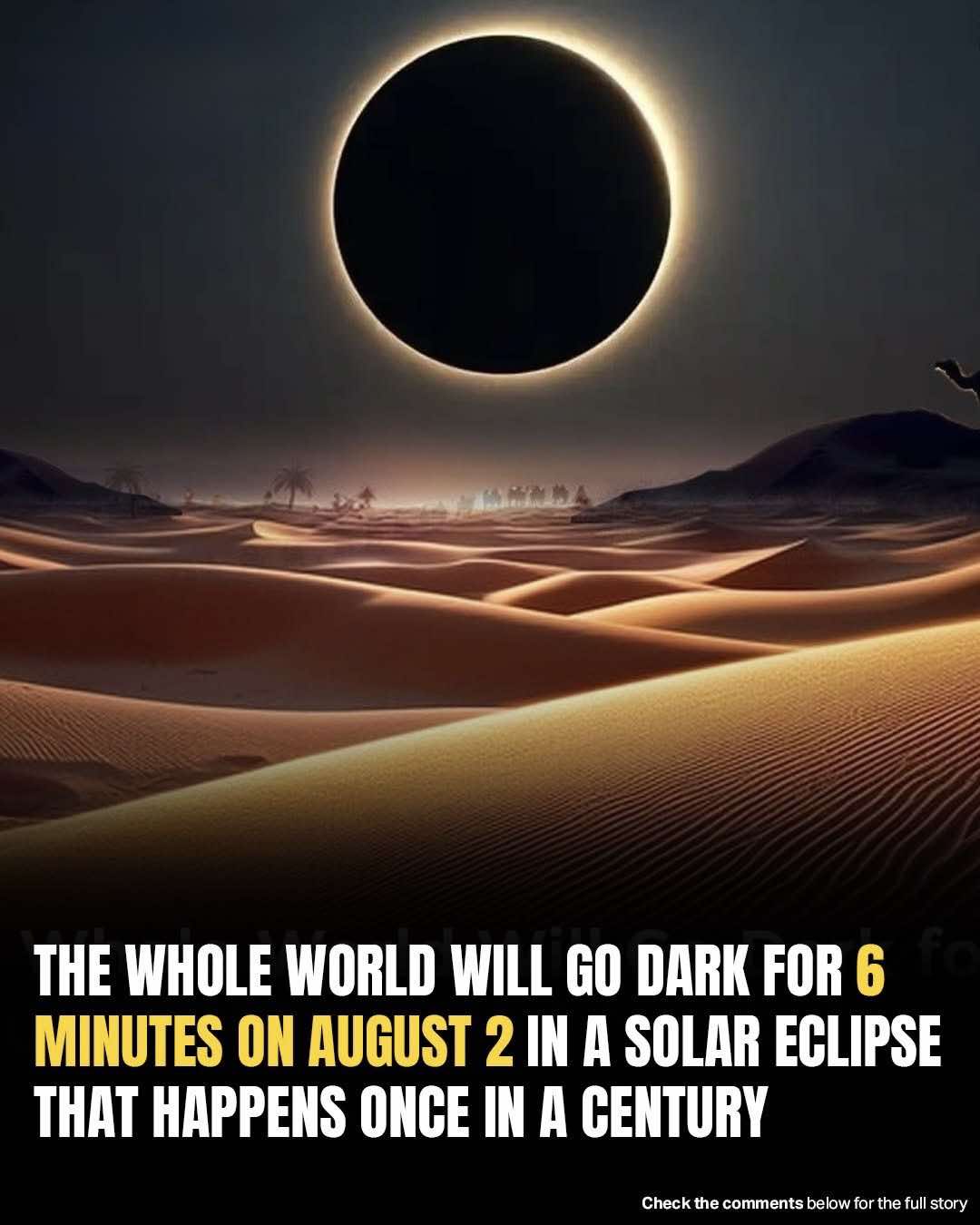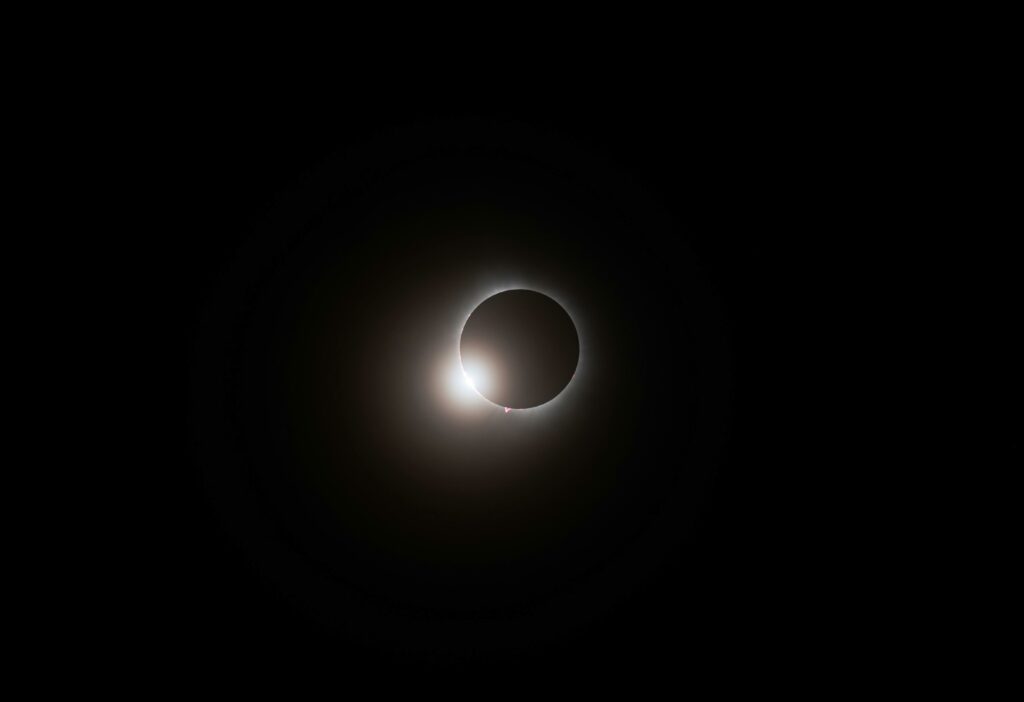On August 2, 2027, the skies will host one of the rarest and most awe-inspiring celestial events of our lifetime, a spectacle that only happens about once in a hundred years. On that day, the moon will align so perfectly with the sun that it will completely block out its brilliant light, plunging the land into an otherworldly darkness in the middle of the day. For a few extraordinary minutes, the familiar world of sunlight and shadows will be transformed into a mysterious twilight, reminding us just how small we are under the vastness of the universe. This phenomenon, known as a total solar eclipse, is considered by many astronomers and skywatchers to be the most breathtaking of all natural wonders.
What makes this particular eclipse even more remarkable is its duration. The darkest stage of a solar eclipse is called “totality,” the moment when the sun is entirely hidden behind the moon. During the 2027 eclipse, totality will last for six minutes and 23 seconds, making it the longest such event since 1991. For perspective, most total eclipses last just two to four minutes. Those extra minutes may not sound like much, but for anyone who has witnessed the sudden silence, the drop in temperature, and the uncanny sight of the sun’s glowing corona encircling the black disk of the moon, they will feel like a lifetime.
The eclipse has already earned a special name: the “Great North African Eclipse.” As the title suggests, it will be best viewed across regions of North Africa, with the city of Luxor in Egypt being one of the most ideal locations on Earth to experience it. In Luxor, observers will be treated to the longest duration of totality, making it an irresistible destination for scientists, eclipse chasers, and curious travelers alike. Imagine standing among the ancient temples and monuments of this historic city, where pharaohs once ruled, while above you the sky darkens in an event so rare it will not be repeated in the same form for nearly a century.
But even if you are not able to make it to Luxor, all hope is not lost. The path of totality will stretch across several countries, meaning that millions of people will still have the chance to experience the event in its full glory. In North Africa, wide stretches of land will be bathed in this temporary shadow. Parts of Southern Europe will also fall within the eclipse’s reach, with Spain and Gibraltar standing out as excellent viewing points. Under clear skies, the sight will be unforgettable: the gradual dimming of daylight, the eerie stillness in the air, and then the breathtaking moment when the day turns briefly into night.
In Europe, some of the best options for viewing will be found in Southern Spain. The towns of Tarifa and Cádiz, both rich with culture and history, will allow observers to witness totality lasting up to four minutes and 39 seconds. That’s long enough to see stars appear in the daytime sky, to watch the horizon glow in 360 degrees, and to feel the sharp contrast between the normal warmth of a summer day and the sudden coolness that arrives when the sun is covered. Gibraltar, located at the entrance to the Mediterranean, offers another fascinating vantage point. Here, the eclipse will first touch land in Europe, although the period of totality will be shorter. Still, the uniqueness of watching such an event in this small but iconic location may draw many visitors who want to be among the first in Europe to experience it.
The reason this eclipse will last so long is due to a rare alignment between the Earth, the Moon, and the Sun. Several factors influence how long an eclipse lasts: the exact distance between the Earth and the Moon, the Moon’s position in its elliptical orbit, and the tilt of the Earth’s axis all play a role. In 2027, everything will align almost perfectly to create an unusually long period of darkness. For astronomers, this is a golden opportunity to study the solar corona—the outer atmosphere of the sun that is only visible during totality. For everyone else, it’s a chance to pause, look up, and feel part of something cosmic.
For those lucky enough to live within the eclipse’s path, preparations will begin months in advance. Hotels and guesthouses in regions like Luxor, Tarifa, and Cádiz are expected to fill up quickly with travelers who don’t want to miss this once-in-a-lifetime chance. Local communities may hold festivals, viewing parties, or educational events around the eclipse, turning the day into not only a scientific occasion but also a cultural celebration. Families will gather in open fields with picnic blankets, photographers will set up their equipment hours before totality, and children will experience the wonder of watching the sun disappear, perhaps for the first and only time in their lives.
The atmosphere during an eclipse is difficult to describe to those who have never seen one. Birds often grow silent, as if confused by the sudden darkness. Animals may behave strangely, thinking night has arrived. A noticeable chill can be felt in the air. And then there’s the visual spectacle: the sky darkening to a deep twilight, Venus or Jupiter shining brightly near the sun, and the dazzling white corona glowing like a crown. For a few minutes, the world feels entirely different, as if nature has pressed pause and invited us to simply marvel.
Astronomers remind us that total solar eclipses of this magnitude are incredibly rare. After the Great North African Eclipse of 2027, another eclipse of comparable length will not occur until the year 2114—almost nine decades later. For most people alive today, this will be the only opportunity to experience such a long-lasting total eclipse. That rarity is what makes it so special. It’s a reminder of the extraordinary patterns that govern our solar system and of how precious it is to witness them with our own eyes.

So, if you’ve ever dreamed of experiencing an event that connects ancient history, modern science, and pure human wonder, the eclipse of August 2, 2027, should be marked on your calendar. Whether you find yourself in the deserts of Egypt, on the coast of Spain, or standing on the Rock of Gibraltar, the moment when the moon and sun align will be unforgettable. Gather your family, your friends, or even just your own sense of curiosity, and take the time to look up. For six minutes and 23 seconds, the universe will gift us with a show of shadows and light, silence and awe. And long after the sunlight returns, the memory will stay with you, a reminder of just how extraordinary our world—and the skies above it—truly are.
If you know someone who would love to experience this incredible phenomenon, be sure to share this article with them. The more people who prepare, the more who will be able to enjoy a moment that will not come again in our lifetime.







